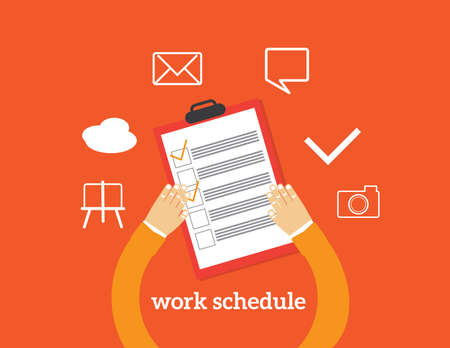Recognizing the Importance of Boundaries in Remote Work
As remote work becomes more common across the United States, understanding the need for healthy boundaries is essential for everyone—from entry-level employees to team leaders. When your home doubles as your office, it’s easy for work and personal life to blur together. This can lead to feeling overwhelmed, stressed out, or even burned out.
Why Boundaries Matter When Working from Home
Setting clear boundaries helps you separate your job responsibilities from your personal life. This not only protects your mental health but also supports productivity and overall happiness. Without these boundaries, you might find yourself answering emails late at night, skipping breaks, or constantly thinking about work—even during family time or downtime.
Common Signs That You Need Better Work-Life Boundaries
| Sign | Description |
|---|---|
| Constantly checking work messages after hours | You feel pressure to always be available, making it hard to unwind. |
| No defined start or end to your workday | Your work stretches into evenings or weekends without a clear stopping point. |
| Difficulty focusing on personal activities | Your mind stays on work tasks even when you’re off the clock. |
| Feeling drained and less motivated | You notice increased fatigue and less interest in both work and hobbies. |
Benefits of Setting Healthy Boundaries
- Improved focus: When you know when work starts and ends, you can give your best effort during work hours.
- Reduced stress: Clear boundaries mean less guilt about taking breaks or enjoying time off.
- Stronger relationships: More quality time with family and friends leads to better connections outside of work.
- Greater job satisfaction: A balanced approach helps prevent burnout and keeps you motivated.
By recognizing the importance of healthy boundaries while working remotely, you take the first step toward creating a balanced and fulfilling remote work experience.
Common Challenges of Working Remotely
Remote work has many perks, but it also comes with unique challenges that can make setting healthy boundaries tough. Recognizing these obstacles is the first step to preventing burnout and creating a better work-life balance.
Blurred Lines Between Work and Home Life
When your living room becomes your office, it’s easy for work hours to spill into personal time. Many remote workers find themselves checking emails late at night or feeling guilty for stepping away during the day. This overlap makes it hard to “switch off” and truly relax.
Examples of Blurred Boundaries
| Situation | Impact |
|---|---|
| Working from the couch or bed | Lack of separation between work and rest leads to decreased productivity and relaxation |
| Answering messages after hours | Reduces downtime and increases stress levels |
| No clear start or end to the workday | Makes it hard to maintain a consistent routine |
Technology Overload
The convenience of digital tools means we’re always connected, but too much screen time can be overwhelming. Video meetings, chat notifications, and constant email alerts make it challenging to focus and can lead to mental fatigue.
Signs of Technology Overload
- Feeling drained after back-to-back video calls
- Difficulty concentrating due to frequent pings and pop-ups
- Trouble unplugging from devices, even outside working hours
Increased Expectations of Availability
Some remote workers feel pressure to always be “on” since they aren’t physically in the office. Managers and coworkers might expect instant replies, even outside regular hours. This expectation can create anxiety and make it difficult to establish personal boundaries.
What Remote Workers Often Experience:
- Pressure to respond quickly: Fear of missing out or appearing uncommitted if responses aren’t immediate.
- Work creep: Tasks gradually extend beyond normal working hours.
- Lack of privacy: Difficulty finding uninterrupted time for deep focus or personal matters.
Understanding these common challenges is important for anyone looking to set healthier boundaries while working remotely. By identifying these issues early on, you can take steps toward a more balanced and sustainable remote work experience.

3. Effective Strategies for Setting Healthy Boundaries
Create a Dedicated Workspace
Designating a specific area in your home for work can make a huge difference. Even if you don’t have a separate room, setting up a desk or table just for work helps signal to your brain—and others in your home—when you’re “at work” and when you’re not. A dedicated workspace reduces distractions and creates a clear mental boundary between professional and personal time.
Establish Clear Work Hours
It’s easy to let work bleed into your evenings or weekends when working remotely. Set regular start and end times for your workday, just like you would at the office. Let colleagues know when you’re available and when you’re offline. Sticking to these hours helps prevent burnout and ensures you get enough downtime.
| Tip | How It Helps |
|---|---|
| Set a daily start and end time | Keeps work from taking over personal life |
| Use calendar blocks for focus time | Ensures uninterrupted periods for deep work |
| Schedule regular breaks | Boosts productivity and well-being |
Communicate Your Boundaries Clearly
Your coworkers and family won’t know your boundaries unless you share them. Be open with your team about your availability, especially if you need to step away during the day for family responsibilities. Use tools like Slack status updates or shared calendars to indicate when you’re focused or out of the office.
Examples of Boundary-Setting Communication:
- Email auto-replies: “I respond to emails between 9am and 5pm EST.”
- Status messages: “In a meeting until 2pm—will respond after.”
- Family signs: A note on your door or desk: “Working—please knock if urgent.”
Pace Yourself and Prioritize Self-Care
Remote work makes it tempting to skip breaks or push through fatigue. Make it a habit to step away from your screen, stretch, go for a walk, or grab a healthy snack. Prioritizing self-care isn’t selfish—it’s essential for long-term productivity and mental health.
4. Communicating Your Boundaries with Managers and Team Members
Open and honest communication is key to setting healthy boundaries while working remotely. In the U.S. workplace, being clear about your needs helps prevent misunderstandings, supports teamwork, and protects your well-being. Here’s how you can effectively communicate your boundaries in a diplomatic way:
Why Transparent Communication Matters
Remote work blurs the lines between personal and professional life. If you don’t share your boundaries, others may not realize when you’re unavailable or overwhelmed. When everyone is on the same page, it reduces stress, boosts productivity, and promotes respect within the team.
How to Assert Your Needs Diplomatically
Use these tips to express your boundaries respectfully in a typical American workplace:
| Situation | How to Communicate |
|---|---|
| Unavailable after hours | “I want to give my best during work hours, so I’ll be offline after 6pm unless there’s an urgent need. Please feel free to email me, and I’ll respond the next business day.” |
| Managing back-to-back meetings | “To stay focused and energized, I’m building short breaks into my schedule between meetings. Let’s plan our check-ins accordingly.” |
| Needing uninterrupted time for deep work | “I have set aside 10am-12pm for project work each day. I’ll be checking messages before and after this block.” |
Tips for Effective Boundary Setting Conversations
- Be proactive: Don’t wait until you feel burned out. Share your needs early with your manager and teammates.
- Stay positive: Frame boundaries as ways to do your best work—not as complaints.
- Invite collaboration: Ask if your approach works for others and adjust if needed.
Sample Phrases You Can Use
- “To keep my workflow efficient, I’ve set certain hours for focused work. Does this timing align with our team’s needs?”
- “I’m committed to meeting deadlines and also want to maintain balance. Here’s how I propose we handle after-hours requests.”
By being upfront and considerate, you help create a culture where everyone can thrive—both personally and professionally.
5. Self-Care Practices to Support Long-Term Wellness
Why Self-Care Matters for Remote Workers
Working from home can blur the lines between your job and personal life. Without a clear boundary, it’s easy to skip breaks, work late into the night, and forget about your own needs. In the U.S., more employers and employees are embracing self-care as an essential part of remote work culture. It’s not just about feeling good—it’s about staying energized, healthy, and productive in the long run.
Popular Self-Care Trends in American Workplaces
American companies are increasingly supporting their teams with initiatives that encourage mental and physical well-being. Here are some self-care trends you’ll commonly see:
| Trend | Description | How to Try It |
|---|---|---|
| Regular Breaks | Taking short, scheduled breaks during the workday to rest your mind and body. | Set a timer every hour to stand up, stretch, or take a quick walk. |
| Mental Health Days | Using paid time off specifically for rest and mental health instead of illness or vacation. | Talk to your manager about using PTO for a mental recharge when you feel overwhelmed. |
| Digital Detoxes | Taking intentional time away from screens and devices outside of work hours. | Pick one evening a week to disconnect—no emails or social media after 6 PM. |
| Wellness Challenges | Participating in friendly team challenges focused on steps, hydration, or mindfulness. | Join company wellness programs or start a step challenge with coworkers. |
| Virtual Support Groups | Attending online meetups for sharing experiences and tips on remote work balance. | Look for employee resource groups or online communities that match your interests. |
Simple Self-Care Suggestions You Can Start Today
- Create a morning routine: Start your day with something you enjoy—coffee on the porch, stretching, or journaling—to set a positive tone before logging in.
- Set boundaries around notifications: Turn off non-essential alerts after work hours to give yourself real downtime.
- Use your lunch break wisely: Step away from your computer. Eat somewhere different, take a short walk, or do a quick meditation session.
- Add movement into your day: Even five minutes of stretching or walking between meetings can help relieve stress and boost focus.
- Reach out for support: If you’re feeling isolated or overwhelmed, talk to your manager or HR about resources like Employee Assistance Programs (EAPs).
Your Well-Being Is a Priority
The American workplace is evolving to recognize that self-care isn’t selfish—it’s necessary. By trying these practices and making them a regular part of your routine, you’ll be better equipped to set healthy boundaries and keep burnout at bay while working remotely.


